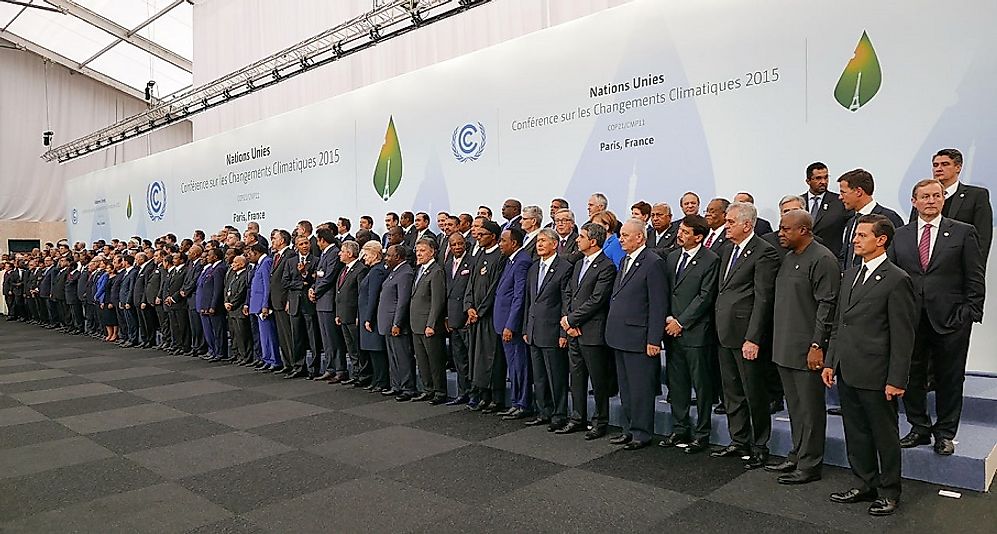Paris Agreement On Climate Change, 2015 (Accord de Paris)

5. Overview of the UNFCCC -
The United Nations Framework Convention on Climate Change (UNFCCC) was originally discussed in 1992, and officially went into effect in 1994. It is an international agreement concerning environmental health. It main objective is to ensure that levels of greenhouse gases in the atmosphere are maintained and reduced in order to prevent climate change. This treaty works primarily as a framework for future international treaties to set limits on greenhouse gas emissions. The UNFCCC does not mention specific limits and has no enforcement power. Today, the agreement has 197 members.
4. Drafting and Acceptance of the Paris Agreement -
The Paris Agreement was the principal topic at the 21st Conference of the Parties of the UNFCCC, which was held in December of 2015 in Paris, France. Representatives from 195 of the 197 member nations attended the conference and participated in the negotiations. It was officially adopted on December 12, 2015 and available for signatures on Earth Day of 2016 (April 22). Currently, 193 UNFCCC members have signed the Paris Agreement and 105 of them made some changes before signing. The European Union was the last member to amend the terms and signed in October 2016. This signature gave the treaty the sufficient amount of greenhouse gases to go into effect. The Paris Agreement became an active treaty on November 4, 2016.
3. Terms and Objectives of the Agreement -
The objective of this treaty was to ensure that the global temperature does not exceed the pre-industrialization temperatures by more than 3.56° Fahrenheit every year. It also includes an agreement that holding temperatures to no more than 3.47° Fahrenheit over pre-industrialization levels will help to decrease the risks of global climate change. Signers agree to utilize low greenhouse gas emission technology so long as it does not hinder agricultural production. Each signing country identifies its own guidelines for participating in the agreement. These efforts must be reported every 5 years and the agreement obligates participants to demonstrate progress during that time. Over the years, the efforts within each country must progressively increase. However, the Paris Agreement does not represent international law and therefore, cannot be enforced.
2. Challenges and Criticisms -
The United Nations Environment Program has reviewed the Paris Agreement and determined that the self-defined greenhouse gas emission guidelines are not enough to maintain the target temperature ranges. In fact, the agreed upon levels are projected to cause an increase of up to 3.74° Fahrenheit over pre-industrial levels. Other criticisms of the agreement are based on the fact that it is not actually international law, but rather a loose set of promises. Because of this promissory nature, countries are not motivated to reach their identified goals. The Paris Agreement, critics argue, is only symbolic in nature. This means that future governments could decide to back out of the agreement at any moment. One of the most common suggestions made to overcome the weakness of the agreement is to enforce a financial penalty for anybody who does not meet the defined objectives.
1. Implementation -
Implementation of the Paris Agreement relies primarily upon the member nations maintaining their non-enforceable commitments. In order to assist developing countries with scarce resources, developed countries will be providing financial packages. This money will help implement the plan to lower greenhouse gas emissions as well as provide assistance in the event of natural disasters.











